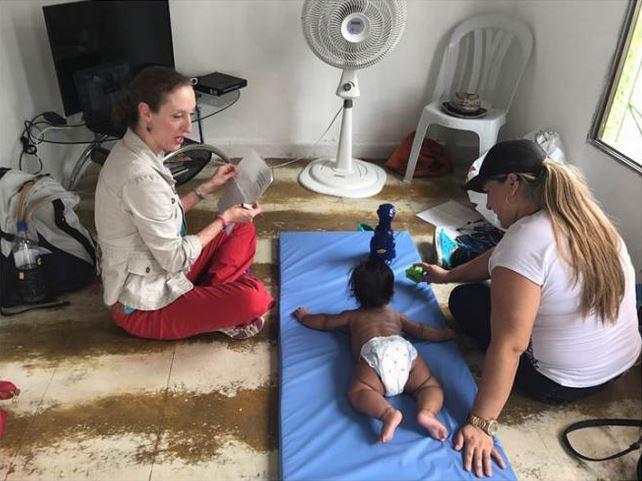Findings from two new studies today shed more light on screening tests used to detect Zika complications in fetuses during affected pregnancies, one suggesting that magnetic resonance imaging (MRI) should be added to standard ultrasound and the other adding more evidence that ultrasound is useful for flagging prenatal problems.
The first study was presented by researchers from the Children's National Health System, based in Washington, D.C., at the ID Week taking place in San Diego, and the second was published in a New England Journal of Medicine letter by doctors from Martinique.
MRI can reveal more extensive damage
In their ID Week presentation, researchers described a longitudinal neuroimaging study that enrolled 48 pregnant women exposed to Zika virus in their first or second trimester; 46 are from Barranquilla, Colombia, and 2 are from the Washington area and were exposed to the virus during travel.
All of the women had at least one diagnostic imaging test while pregnant, with the initial MRI or ultrasound at 25.1 weeks gestational age. Thirty-six of the women underwent both MRI and ultrasound at about 31weeks' gestation. The images were read by Children's National radiologists.
Abnormal fetal MRIs were noted for 3 (6%) of the 48 pregnancies. For one fetus, MRI showed heterotopias (clumps of misplaced gray matter) and an abnormal cortical indent. Ultrasound taken at the same gestational age, however, suggested that the brain was developing normally.
In the second case, MRI and ultrasound detected the same abnormalities, which included parietal encephalocele and Chiari malformation type 2. And in the third case, MRI revealed several problems, including a thin corpus callosum, abnormal brain stem development, temporal cysts, heterotopias, and cerebral and cerebellar atrophy. The ultrasound findings were less detailed, showing significant ventriculmegaly and decreased fetal head circumference.
Sarah Mulkey, MD, PhD, a fetal-neonatal neurologist at Children's National Health System, said in a press release that MRI and ultrasound provide complementary data to assess changes in Zika-affected pregnancies. "In addition, our study found that relying on ultrasound alone would have given one mother the false assurance that her fetus' brain was developing normally, while the sharper MRI clearly pointed to brain abnormalities.
After birth, the babies underwent follow-up MRI and ultrasound. For nine, ultrasound revealed cysts in the choroid plexus (which produces cerebrospinal fluid) or germinal matrix, and for one, the ultrasound showed brain lesions.
Mulkey said a number of factors can produce brain abnormalities and added that more studies are needed to explore if the cystic changes are linked to prenatal Zika exposure or something else.
Ultrasound flags Zika-linked fetal changes
In the second study, physicians from Martinique described diagnostic imaging findings in 103 babies born to mothers who had confirmed Zika infection and who had normal results on prenatal ultrasound and on physical examination at birth.
Martinique's Zika outbreak took place from December 2015 to October 2016, sickening about 36,000 people. During that period, 14 microcephaly cases were detected, all on fetal ultrasound. All but one of the pregnancies were terminated.
Follow-up MRI after birth in babies with normal ultrasound found that the babies had no Zika-related lesions, no other anatomical defects, and brain measurements within normal ranges. Five had minor abnormalities such as ventricular asymmetry that researchers thought were unrelated to congenital Zika infection.
The authors concluded that prenatal ultrasound in Zika-infected pregnant women can detect changes in the fetus and assist decision-making at that stage, but long-term functional studies correlated to imaging findings are needed.
See also:
Oct 4 Children's National Health System press release
Oct 4 N Engl J Med letter





















